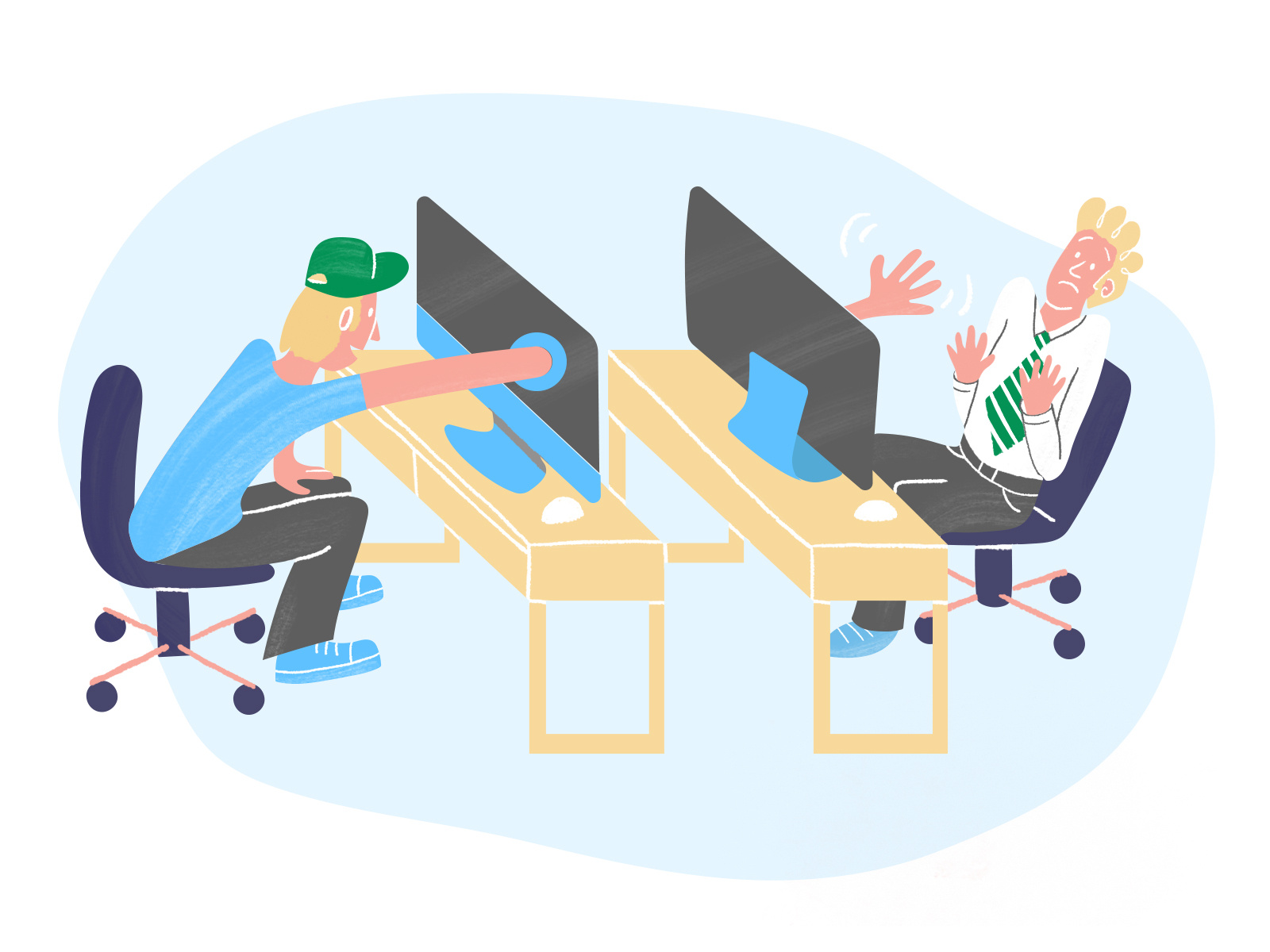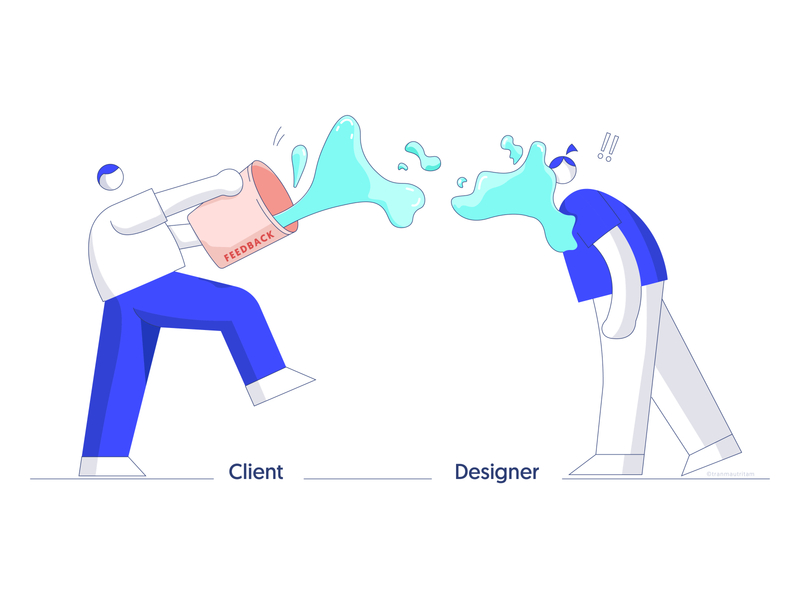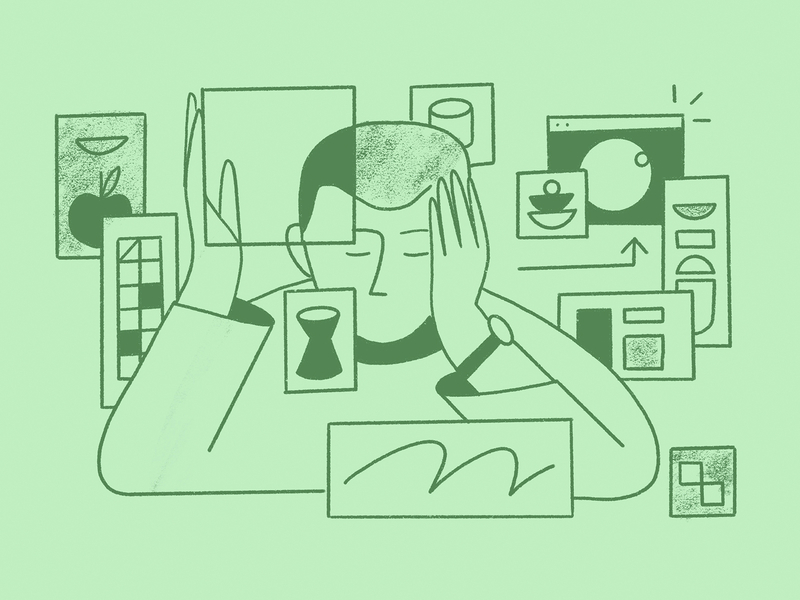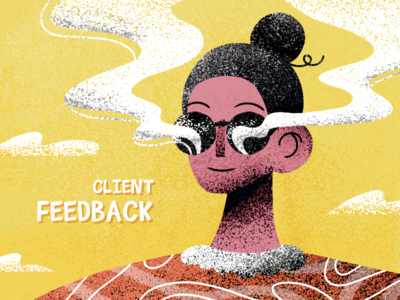This article was sponsored by our friends at Ashore—the online proofing software built for high-velocity creatives.
If you’ve ever been known to blankly stare at your computer screen while ruminating over just how to send a follow-up email after no response from your clients, well don’t worry. First, we want you to know that you aren’t alone. Many people have been in your predicament before. Second, because this isn’t a new problem, your ancestors have passed down some helpful guidelines on follow-up emails.
Communication Breakdown
The trouble with email is that it has to be a two-way conversation in order to work. Without a response, email isn’t fulfilling its primary function. Therefore, when you need a follow-up email, it’s because there has been some kind of breakdown in communication. When something like this happens, it’s human nature to wonder why.
Why Are Your Clients Not Responding To You?
Our brains love to create little stories to explain and rationalize situations (even if the stories we make up aren’t actually that rational). To put your mind at ease, here are a few more likely explanations (in no particular order).
1️⃣ They Don’t Like Conflict, or They Don’t Know What to Say
If you’re getting worried about just sending a follow-up email, it shouldn’t surprise you that clients can also be worried about bothering you, too. We often believe people have difficulty receiving a critique of their work, but it’s very common for people to find it challenging to give constructive criticism, too.
What can you do? If you want to avoid this being the case, do what you can to help your clients feel comfortable giving you honest, actionable feedback. First, let them know you appreciate everything: the good, the bad, and the ugly. Next, try to provide some guidelines for the type of information you need from them; ask them direct questions or provide a checklist.
2️⃣ The Project Has Stalled on Their End
When a project fails before it ever gets off the ground, it’s a disappointment no matter the reason for it. This is potentially a tragic turn of events for everyone involved, and perhaps they don’t know how to break the news to you or you’ve slipped their mind as the project faded.
What can you do? It’s never ideal to lose work, but don’t let it be a deterrent for you. It doesn’t mean that your relationship with this client is over for good. If you suspect a project has fallen through, make sure to let your client know that there are no hard feelings and you’re happy to work with them again in the future.
3️⃣ They’re Super Busy
This scenario could actually be good news for you. They know you need something from them, whether that be approval on a proposal, feedback on a design or information only they can provide you, and they just want to wait until they have a moment to dedicate their full attention to you.
What can you do? You’ll find that a busy, distracted client is usually the kind of person you’re dealing with, and that’s totally fine. They hired you to help them for a reason, after all. A follow-up email is a good way to jog their memories and keep you and the project at the top of their to-do lists.
How to Send a Follow-Up Email After No Response (No Matter the Reason)
It’s not always obvious what the reason for an unresponsive client could be, and there are many more reasons than we’ve even included above. Therefore, it’s smart to be prepared with several different templates for your follow up emails. The benefit of having these templates ready to fire off is that you don’t have to waste time harping over the language later.
📬 The Archetype
If you only have one follow up email template, make sure this is the one. Your archetype needs to be a good place to start, for those situations when you aren’t sure why they haven’t responded, but it’s definitely too early to worry.

This email is a good standard follow up email because, one, it encourages clients to reply if they aren’t clear on what you need from them, and two, because it explains what they achieve by responding to you. The goal here is to eliminate any potential clarification and lay out what the next steps are.
📬 The Follow-Up to a Follow-Up
Sometimes, it takes more than one email to get a response from a client, but the key is to be persistent. If a client still wants you, you have to have that they’ll respond eventually. In the meantime, don’t let them forget about you.

This email is reserved and considerate while still encouraging them to give you a response. It even provides them with an alternative to email communication, instead proposing a meeting. As a rule of thumb, anytime you request a meeting of any kind, make sure you provide your availability when you ask for theirs.
📬 The ASAP Email
Even when clients may have been the ones to set the deadlines, that doesn’t mean they will feel beholden to them. When the situation is a bit more dire, and you need a response from your client immediately or the timeline will be thrown off, don’t be afraid to be a little assertive. Especially if they’ve been unresponsive for a while.

This email evokes a bit more urgency, relaying the necessity of their feedback in moving the project forward. In fact, until you receive actionable feedback or approval from them, you can’t do anything more.
Let Ashore Worry About Unresponsive Clients
When you offer creative services, sometimes getting clients seems like the biggest challenge, but keeping them on the hook can be just as arduous. When clients fail to actively participate in the review and approval process, it prevents you from completing projects on time and getting paid. For this reason, you need a plan of attack for client follow up.
If composing and managing a multiphase strategy that escalates your emails seems a little intimidating, there is another solution. Ashore is a proofing software made by creatives, for creatives that improves the rate of client review and approval by as much as 50%. When it comes time to review a project, let Ashore handle client notification and reminders. With email templates, you can quickly create and send out emails to all of your approvers. Template variables will autofill whenever an email is sent out, saving you time and mental energy.
Schedule automated email reminders to go out at a frequency you’re comfortable with (even as often as every day of the week). Once you’ve created and scheduled your emails in Ashore, you won’t need to give client follow up a second thought. It also helps to introduce some much needed distance between you and your clients. You won’t feel like you’re constantly hounding them — Ashore does the dirty work for you.
Besides saving you the trouble of determining how to send a follow-up email after no response from clients, Ashore has a bunch of other features — contextual commenting, workflow staging, version stacking, approver checklists, and proof timelines, to name a few. Our goal is to help creatives improve their interactions with clients, and by reimagining review and approval of projects, we’ve done just that. Sign up for a free trial of Ashore today, and see what happens when you get out of your inbox (hint: it’s something good) ■
![]() Ashore is an online proofing system built for high-velocity creatives that increases approval ratings by 50% by automating the approval process and improving the quality of feedback from approvers. Thousands of creatives worldwide rely on Ashore to delight their approvers with excellent, white-labeled proofing experiences.
Ashore is an online proofing system built for high-velocity creatives that increases approval ratings by 50% by automating the approval process and improving the quality of feedback from approvers. Thousands of creatives worldwide rely on Ashore to delight their approvers with excellent, white-labeled proofing experiences.
RELATED READING
- Ghosted as a freelancer? Here’s what to do about it
- 5 tips for presenting your design work to clients
- 6 Great Frameworks for Understanding Others
Find more Community stories on our blog Courtside. Have a suggestion? Contact stories@dribbble.com.











